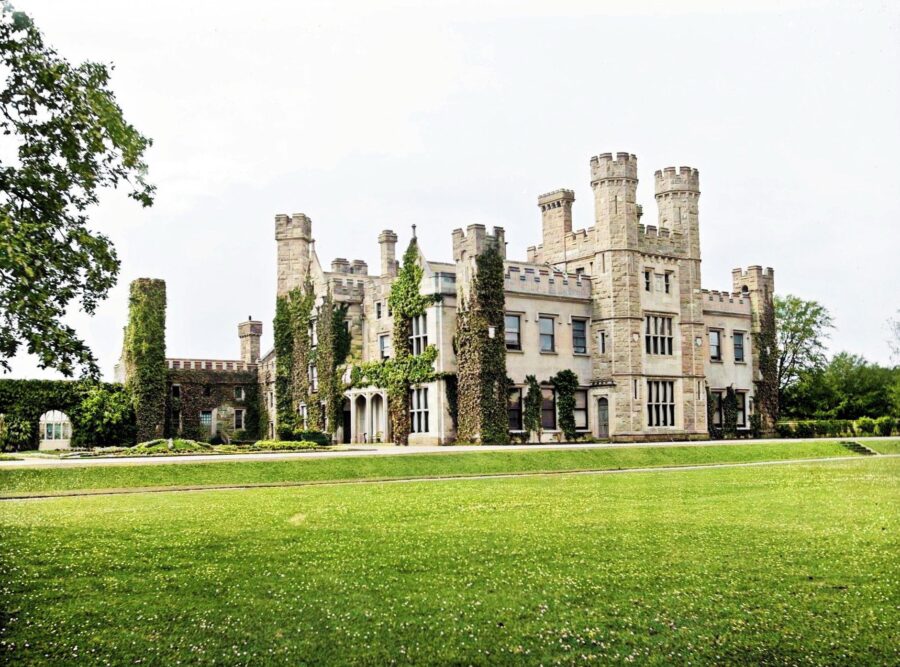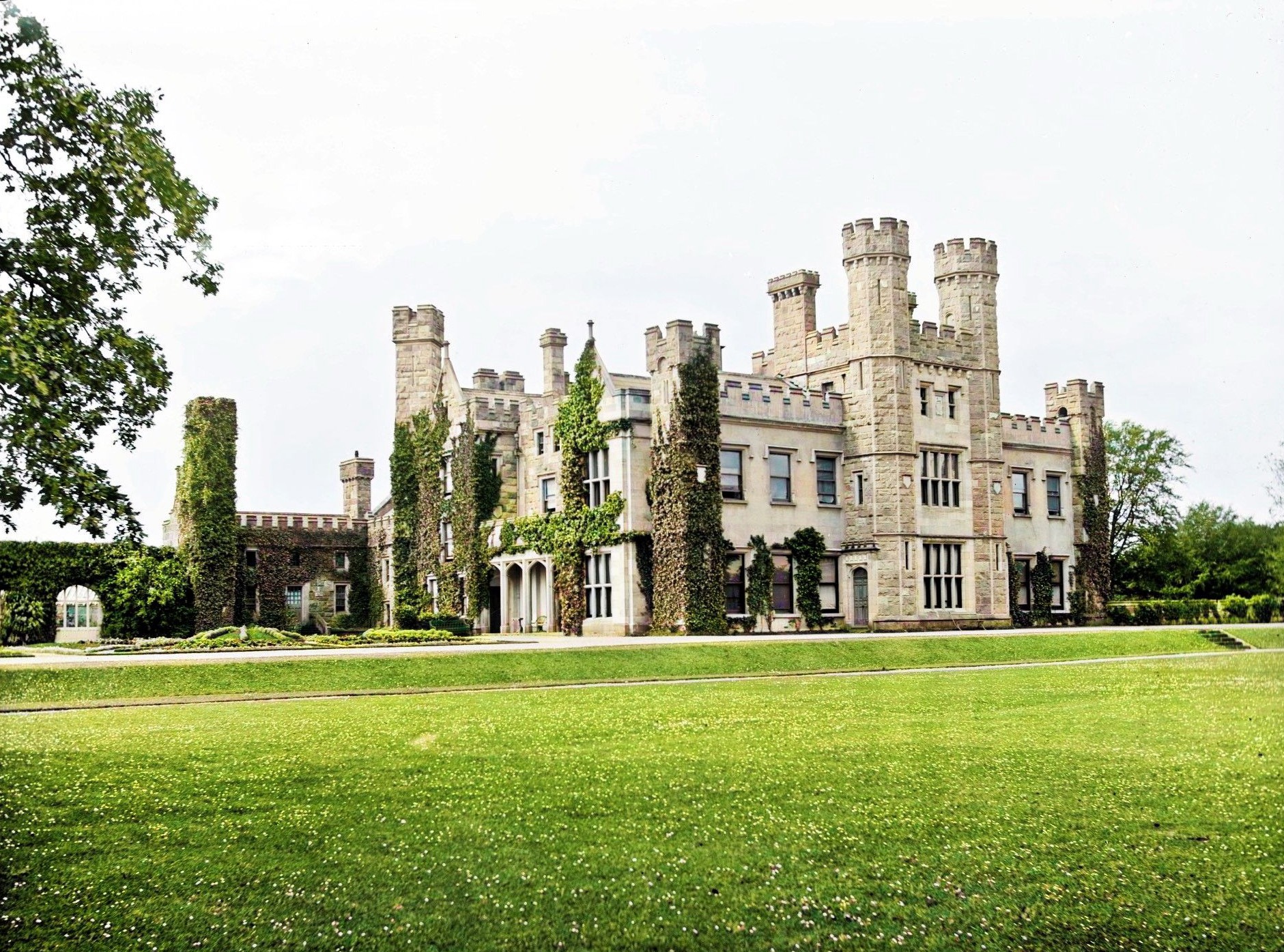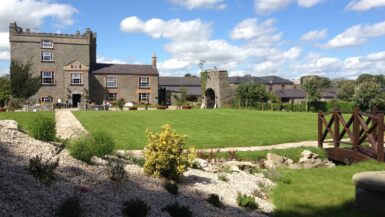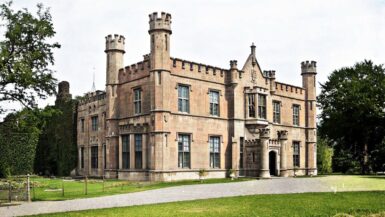Castle Saunderson, located near Belturbet in County Cavan, Ireland, stands as a site of considerable historical and cultural significance. This former family seat of the Saunderson family is now in ruins, marking centuries of history from its origins during the Ulster Plantation to its present state. Situated along the northeastern edge of the Castle Saunderson Demesne, with the Finn River flowing nearby as it enters Upper Lough Erne, the castle’s strategic and picturesque location is undeniably apparent. Approximately half a mile west from Wattlebridge, a small hamlet in the south-southeast of County Fermanagh, the site is accessible from both the Republic of Ireland and Northern Ireland, underscoring its cross-border significance.
Over the years, Castle Saunderson has transitioned from a strategic familial stronghold to a site of ruin, bearing witness to the complex tapestry of Irish history, including conflicts, ownership transitions, and fires that have led to its current condition. In 2012, within the grounds of Castle Saunderson, the Castle Saunderson International Scouting Centre was established by Scouting Ireland, offering a range of facilities for Scouts and non-Scouts alike, further enhancing the castle’s relevance in contemporary times. Despite its ruinous state, the castle and its surrounding demesne remain a point of interest for historians, architects, and the general public, representing a significant chapter in Ireland’s heritage.
Historical Background
Origins and the Ulster Plantation
The history of Castle Saunderson can be traced back to the Ulster Plantation in the early 17th century, a period of significant land redistribution and settlement by the English and Scottish in Ireland. Initially known as Breffni Castle, the land was inhabited by the O’Reillys of Breffni before coming into the possession of the Saunderson family, marking the beginning of their long association with the estate.
The Saunderson Era
Colonel Robert Sanderson, aligned with William of Orange, inherited the castle in the late 17th century. The castle was subject to military action, including being burned by James II’s troops in 1689. This period underscored the castle’s strategic importance, with subsequent military engagements reflecting the broader conflicts of the era.
Architectural Evolution
The original structure underwent significant changes over the centuries. The castle that stands today dates back to 1840 and showcases a Tudor Gothic design, indicative of the Gothic Revival style popular at the time. This era saw the castle evolving beyond a mere residence, serving as a hub for political and social gatherings.
Twentieth-Century Decline
The 20th century was marked by challenges, including changes in ownership and devastating fires, the most significant of which occurred in 1990. These events contributed to the castle’s decline, leading to its current ruinous state.
Preservation and Current Use
In 1997, the castle and its grounds were acquired by Scouting Ireland, which established the Castle Saunderson International Scouting Centre. This development represents a shift towards utilizing historical sites for community and educational purposes, highlighting efforts to preserve the architectural and historical significance of the estate.
Architectural Description
Castle Saunderson’s Architecture
Castle Saunderson, constructed around 1835, is a prime example of Tudor Gothic architecture, a style known for its pointed arches, detailed stonework, and picturesque profiles. The structure, now in ruins, incorporates elements from an earlier house dating back to approximately 1780. Its design features include a complex arrangement of towers and turrets, such as the square-plan three-stage tower and corner turrets that lend it a distinctive and formidable appearance. The entrance is marked by an engaged octagonal-plan tower, adorned with a castellated doorcase, a feature characteristic of the Gothic revival period.
Over time, the castle underwent significant changes, evolving from a classical Georgian house to the medieval castle style seen today. Its ruins still exhibit mullioned and transomed windows, hood-moulded window surrounds, and crenellated parapets, elements that collectively contribute to its Gothic aesthetic. The absence of the roof and the derelict state of its chimneystacks and walls provide a stark reminder of its age and the historical events it has witnessed.
The Surrounding Demesne
The Castle Saunderson estate extends beyond the immediate structure, encompassing gardens, outbuildings, and a designed landscape that highlights the castle’s significance. The demesne includes a walled garden, long associated with country houses of its era, which served both aesthetic and functional purposes. Adjacent outbuildings, though now largely in disrepair, once supported the castle’s day-to-day operations and included stables, kitchens, and servant quarters.
The landscape’s design, characterized by extensive parkland, terraced gardens, and an approach drive, reflects an intention to blend the architectural grandeur of the castle with the natural beauty of its surroundings. These elements, even in their current state, offer insights into the lifestyle and societal status of the castle’s inhabitants.
Castle Saunderson International Scouting Centre
Establishment and Purpose
Within the grounds of Castle Saunderson, the Castle Saunderson International Scouting Centre was inaugurated in 2012 by Scouting Ireland. This facility was established to serve as a hub for scouting activities, providing indoor accommodation and campsites that cover 34 acres. Its establishment reflects a commitment to fostering outdoor education and community engagement among Scouts and non-Scouts alike.
Facilities and Activities
The centre boasts a range of facilities designed to support a variety of activities, from camping and hiking to educational workshops and international scouting events. Its location within the historical demesne allows for unique learning opportunities, connecting participants with the rich cultural heritage of the area.
Role in International Scouting and Community Engagement
The Scouting Centre serves as a focal point for international scouting, offering a venue for scouts from around the world to gather, learn, and exchange experiences. Beyond scouting, the centre has played a pivotal role in community engagement, notably serving as a mass testing centre during the COVID-19 outbreak. This adaptability underscores the centre’s importance not just to scouting but also to the broader community, reflecting its integral role in promoting health, education, and cultural awareness.
Conservation and Heritage Status
Heritage Site Status and Conservation Efforts
Castle Saunderson is recognized for its architectural and historical significance, marking it as a key heritage site within Ireland. Its inclusion in An Taisce’s list of Most-at-Risk buildings in 2021 underscores the urgent need for preservation efforts. This listing highlights buildings at risk due to natural decay, vandalism, or other forms of neglect and deterioration.
Efforts towards the castle’s preservation are challenged by its current state of ruin and the extensive resources required for restoration. Conservation initiatives must balance the preservation of the castle’s historical integrity with practical considerations for future use and community access.







Leave a reply